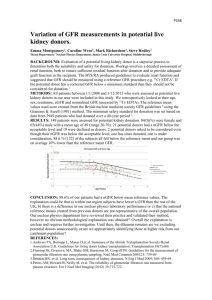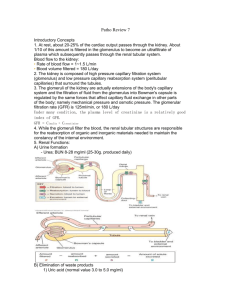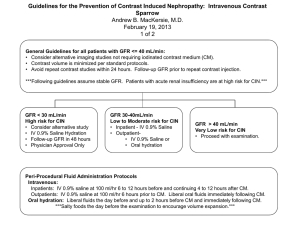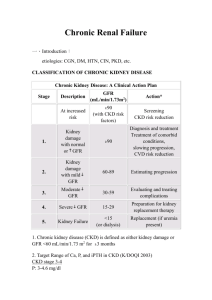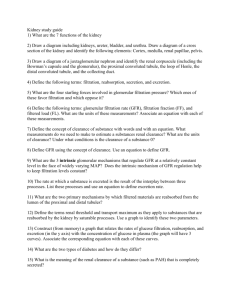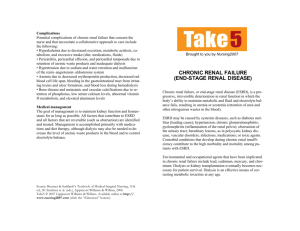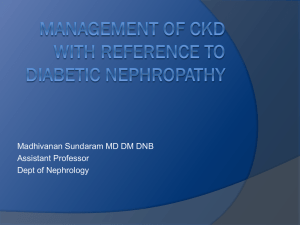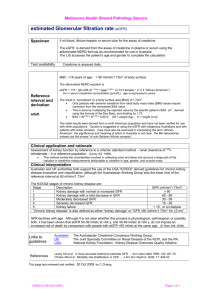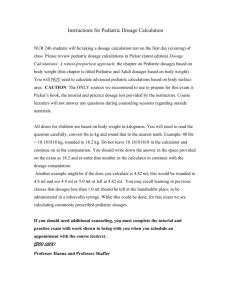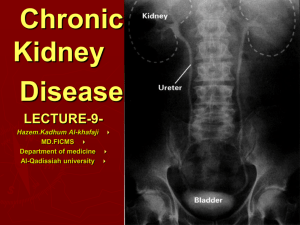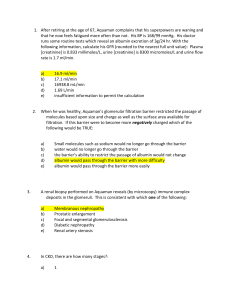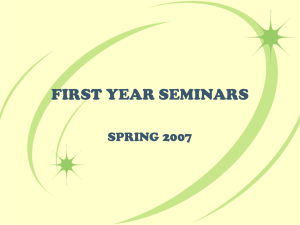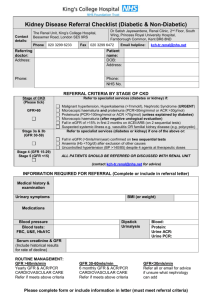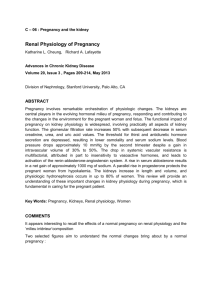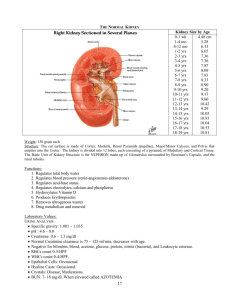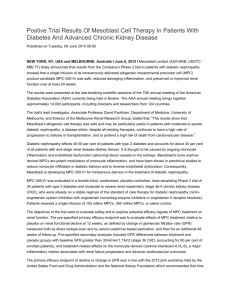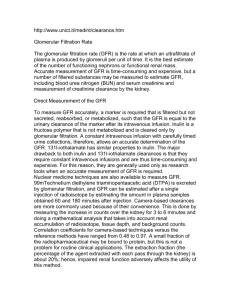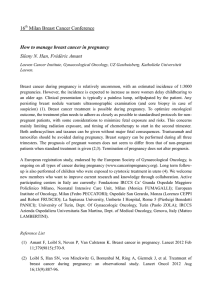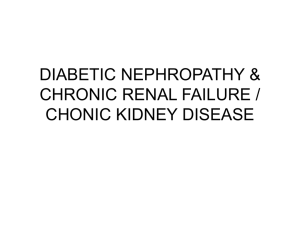Pediatric_Pharmacology
advertisement
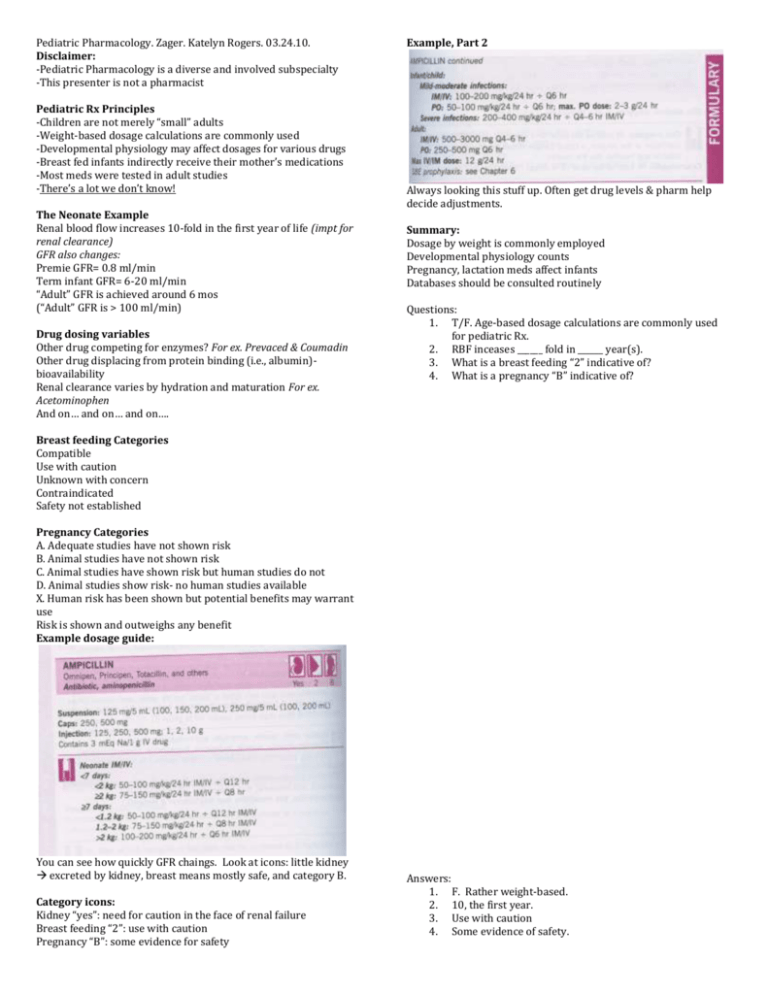
Pediatric Pharmacology. Zager. Katelyn Rogers. 03.24.10. Disclaimer: -Pediatric Pharmacology is a diverse and involved subspecialty -This presenter is not a pharmacist Pediatric Rx Principles -Children are not merely “small” adults -Weight-based dosage calculations are commonly used -Developmental physiology may affect dosages for various drugs -Breast fed infants indirectly receive their mother’s medications -Most meds were tested in adult studies -There’s a lot we don’t know! The Neonate Example Renal blood flow increases 10-fold in the first year of life (impt for renal clearance) GFR also changes: Premie GFR= 0.8 ml/min Term infant GFR= 6-20 ml/min “Adult” GFR is achieved around 6 mos (“Adult” GFR is > 100 ml/min) Drug dosing variables Other drug competing for enzymes? For ex. Prevaced & Coumadin Other drug displacing from protein binding (i.e., albumin)bioavailability Renal clearance varies by hydration and maturation For ex. Acetominophen And on… and on… and on…. Example, Part 2 Always looking this stuff up. Often get drug levels & pharm help decide adjustments. Summary: Dosage by weight is commonly employed Developmental physiology counts Pregnancy, lactation meds affect infants Databases should be consulted routinely Questions: 1. T/F. Age-based dosage calculations are commonly used for pediatric Rx. 2. RBF inceases ______ fold in ______ year(s). 3. What is a breast feeding “2” indicative of? 4. What is a pregnancy “B” indicative of? Breast feeding Categories Compatible Use with caution Unknown with concern Contraindicated Safety not established Pregnancy Categories A. Adequate studies have not shown risk B. Animal studies have not shown risk C. Animal studies have shown risk but human studies do not D. Animal studies show risk- no human studies available X. Human risk has been shown but potential benefits may warrant use Risk is shown and outweighs any benefit Example dosage guide: You can see how quickly GFR chaings. Look at icons: little kidney excreted by kidney, breast means mostly safe, and category B. Category icons: Kidney “yes”: need for caution in the face of renal failure Breast feeding “2”: use with caution Pregnancy “B”: some evidence for safety Answers: 1. F. Rather weight-based. 2. 10, the first year. 3. Use with caution 4. Some evidence of safety.

